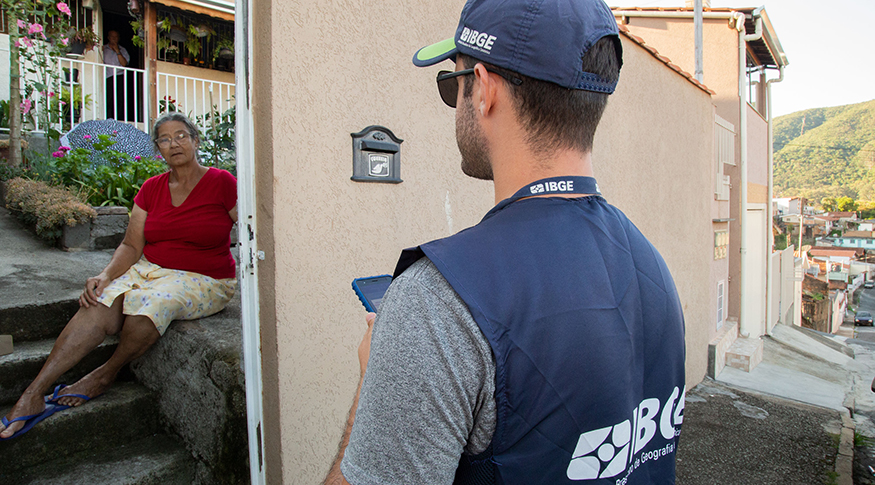2022 Census
IBGE releases analysis of Post-Enumeration Survey results after 2022 Population Census
June 19, 2024 10h00 AM | Last Updated: June 19, 2024 09h43 PM
Highlights
- The Post-Enumeration Survey (PPE) 2022 is conducted by using a sample of selected enumeration areas, after the Census data collection is completed in them.
- Its main objective is to provide resources to measure data coverage and quality of the census operation.
- The results of the content analysis for some variables, such as geographic coordinates, kinship, color or race, age, sex and literacy are the main focus of this publication.
- Many countries conduct surveys as this one in order to measure the quality of their censuses. In Brazil, the IBGE has been done that since the 1970 Population Census.
- The release of PPE 2022 complies with the statistical principle of accountability and transparency.
- It also serves as an input to improve future surveys and help users interpret Census results.

The IBGE released today (19) the analysis of results of the Post-Enumeration Survey after the 2022 Population Census. Although it is an independent survey, PPE is part of the Census project, and has the objective of optimizing the use of data from the census operation, and provide elements to measure Census quality and coverage.
Given the complexity of these surveys, errors and inaccuracies in coverage can be observed. “Failure in data collection coverage of Censuses and in the quality of information reported are a common phenomenon in many countries, and the recognition of such errors comes from evaluation. Also, the identification of levels and standards in the enumeration is essential so that data will be used properly, in a way as to increase the potential of census data,” says Gabriel Borges, manager of the survey.
Many countries conduct surveys like this one to measure the quality of their censuses, for example, Mexico, the United States, the United Kingdom, Portugal, Australia, South Africa, China, India and others.
In Brazil, the IBGE has done that since the 1970 Population Census. The results of the content analysis for some variables, such as geographic coordinates, kinship, color or race, age, sex and literacy are the main focus of this publication.
“In terms of content, there is some divergence that can be seen as natural in surveys of this size. Tem questões situacionais da entrevista que podem levar a divergências, como quem responde, o contexto da entrevista, entre outras. Similarly, when items such as color or race or being a householder are considered, there is not an objectively correct answer to the question. They require different replies, depending on aspects considered by the informant. Some variability is expected between the answers in both surveys. In terms of aggregated figures, the indicators are very similar and that reinforces the quality of Census information,” the researcher adds.
Another result is the evaluation of geographic coordinates. “The geographic coordinates, for example, are at a close distance in the comparison between the Census and the PPE, which shows their importance,” Gabriel Borges explains.
Innacuracies help improve future surveys
The release of PPE 2022 results complies with the statistical principle of accountability and transparency, besides serving as an input to improve future surveys and adjust the Census results, for example, in population projections estimates. The comparison of results shows patterns of consistency and divergence between the surveys, providing elements to better interpret results of the Census operation.
The results, made available for Brazil and Federation Units are available on the IBGE website.




















